Summary
Base is an Ethereum Layer 2 solution developed by cryptocurrency exchange Coinbase in collaboration with Optimism to provide a secure, cost-effective, and easy-to-use environment for developers to build on-chain applications.
Base is compatible with all EVM wallets and Coinbase wallet.
Base offers numerous use cases, including payment applications, token swapping, liquidity provision, token bridging, and DAO launches.
What is Base?
Base is an Ethereum Layer 2 (L2) blockchain officially launched on August 9, 2023 by US-based cryptocurrency exchange Coinbase. Base caught attention in the crypto community because it was the first blockchain launched by a publicly traded company.
Base was developed in collaboration with Ethereum's Layer 2 blockchain, Optimism, on the OP Stack, a standardized open source development stack that powers Optimism. Base allows developers to build decentralized applications (DApps) with access to Coinbase's ecosystem of 110 million verified users and over 80 billion assets.
Base's vision is to create what is called a Superchain powered by Optimism and supported by a community of developers. Base publicly announced that it has no plans to issue a new network token at this time, so users should be very cautious about the possibility of scammers offering fake Base tokens.
What is a Layer 2?
Layer 2 Blockchain is a term that describes secondary protocols or frameworks built on top of an already existing blockchain network (Layer 1) such as Ethereum. The primary purpose of Layer 2 solutions is to improve the scalability, processing capacity, and efficiency of the underlying Layer 1 blockchain, without compromising its security or decentralization.
There are several types of Layer 2 blockchain technology, including state channels (Lightning Network for Bitcoin and Raiden Network for Ethereum), sidechains (Liquid Network for Bitcoin and Loom Network for Ethereum), and rollups (optimistic rollups and ZK-Rollups ).
Some of the most widely used Layer 2 blockchain networks include Optimism, Polygon, zkSynk, and Arbitrum.
What is Optimism?
Optimism is a Layer 2 blockchain solution built on the Ethereum network that aims to improve its scalability and processing capacity, and reduce associated fees. Optimism leverages a technology called optimistic rollups, in which multiple off-chain transactions are aggregated into a single on-chain data representation that is sent to the main Ethereum chain.
Optimism uses a fraud-proof system, which assumes that all added rollup transactions are initially valid. Users have a certain time range to dispute these transactions and present possible evidence of fraud. If any fraudulent activity is detected during this period, the malicious user will be penalized and the transaction will be reversed.
What are the use cases for Base?
Like other Layer 2 networks, Base can be used for a wide variety of use cases. These are some applications that were built on Base.
1. Paid apps
Beam is a payment app that allows users to transact with the USDC stablecoin or the app's native token, Eco. Users can sign up with their Twitter accounts (now X) and cover gas costs with USDC or Eco. Additionally, Beam includes a fiat-to-crypto and crypto-to-fiat conversion gateway.
2. Swap the tokens
Token swapping on decentralized exchanges (DEX) allows Base users to trade various cryptocurrencies. Currently, there are several decentralized exchanges running on Base, such as Uniswap, Maverick, and Dackieswap.
3. Liquidity provision
Users can provide liquidity on the Base blockchain through various DApps, such as Uniswap, BaseSwap, and Dackieswap. These DApps allow liquidity providers to earn transaction fees on liquidity pools.
4. Bridging
Base developed an official bridge known as Base Bridge that is compatible with most Ethereum wallets, such as MetaMask, or the Coinbase wallet. Users can use the bridges to pass ERC-20 tokens between Base and Ethereum.
Bridging from Ethereum to Base usually takes a couple of minutes, while bridging from Base to Ethereum takes about 7 days.
5. DAO launches
A Decentralized Autonomous Organization (DAO) is a blockchain-based organization that is characterized by making community-driven decisions and operating through smart contracts. Aragon, a protocol for creating DAOs, introduced a no-code DApp on the Base network that simplifies the process of creating DAOs.
Will there be a BASE token?
Base's roadmap and official description on Twitter now X) states that they have no plans to issue a network token in the future.
However, projects could initially indicate that they have no plans to airdrop and still execute an unannounced airdrop in the future. This is usually done to reward early supporters of the network for their contribution and to foster a community.
How to connect to the Base network and use the testnet?
Connecting to the Base network is relatively simple and can be done with the Coinbase wallet or an EVM-compatible wallet.
1. Connect to Base with a Coinbase wallet
To use the Coinbase wallet follow these steps:
1. Launch the Coinbase wallet browser extension and log in to your account.
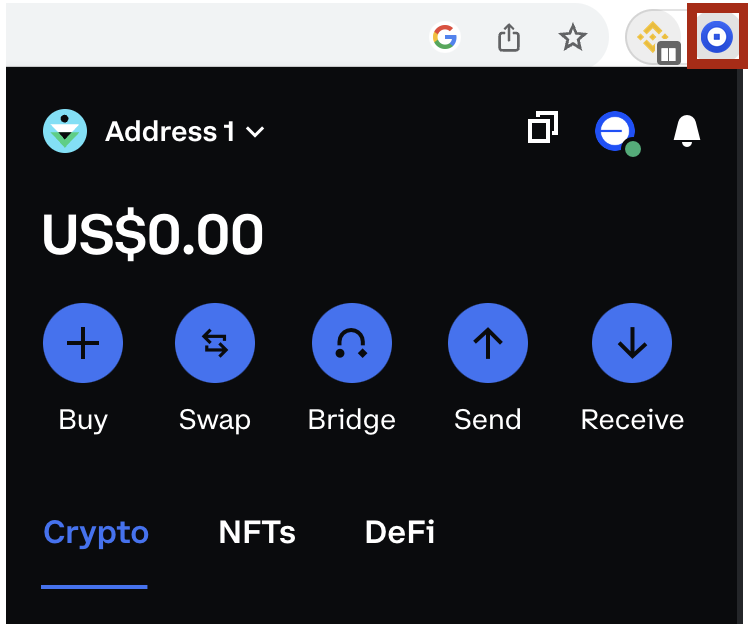
2. Connect to an app using the Coinbase wallet (in this example we will use BaseSwap).

3. Click the network symbol located in the upper right corner to access the network selection menu.
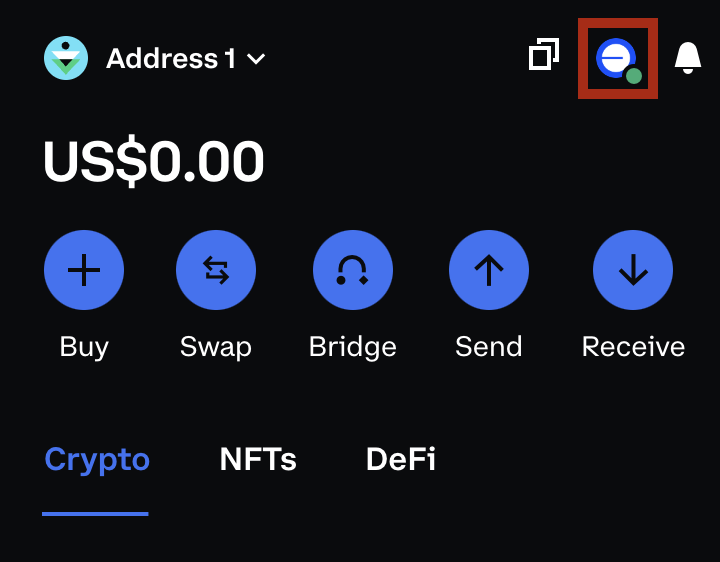
4. Choose Base from the list.
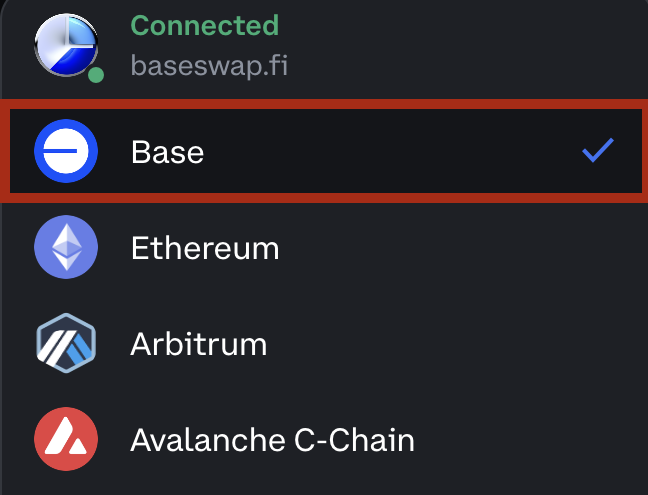
5. The active network will now be Base.
2. Connect to Base with MetaMask
Users can connect to Base with multiple EVM wallets. Let's see how to connect to the Base network with the MetaMask wallet as an example.
1. Launch the MetaMask browser extension.

2. Click the drop-down button at the top of the extension to access the network selection drop-down menu.

3. Select the Add Network button.
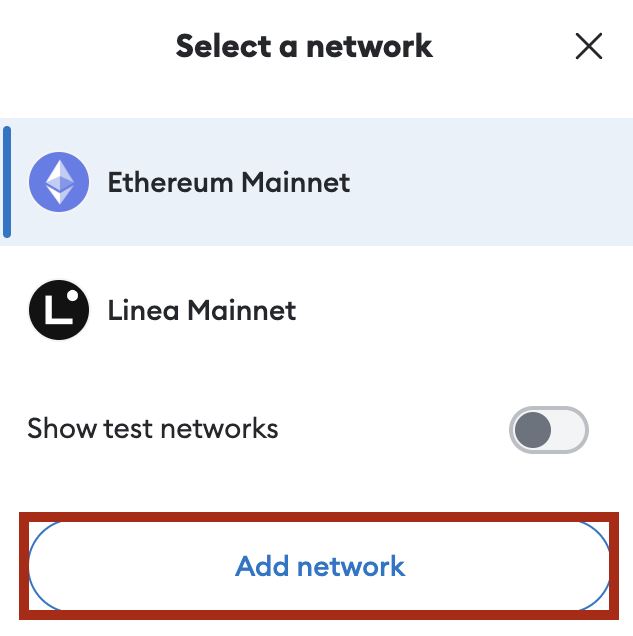
4. Select Add a network manually.
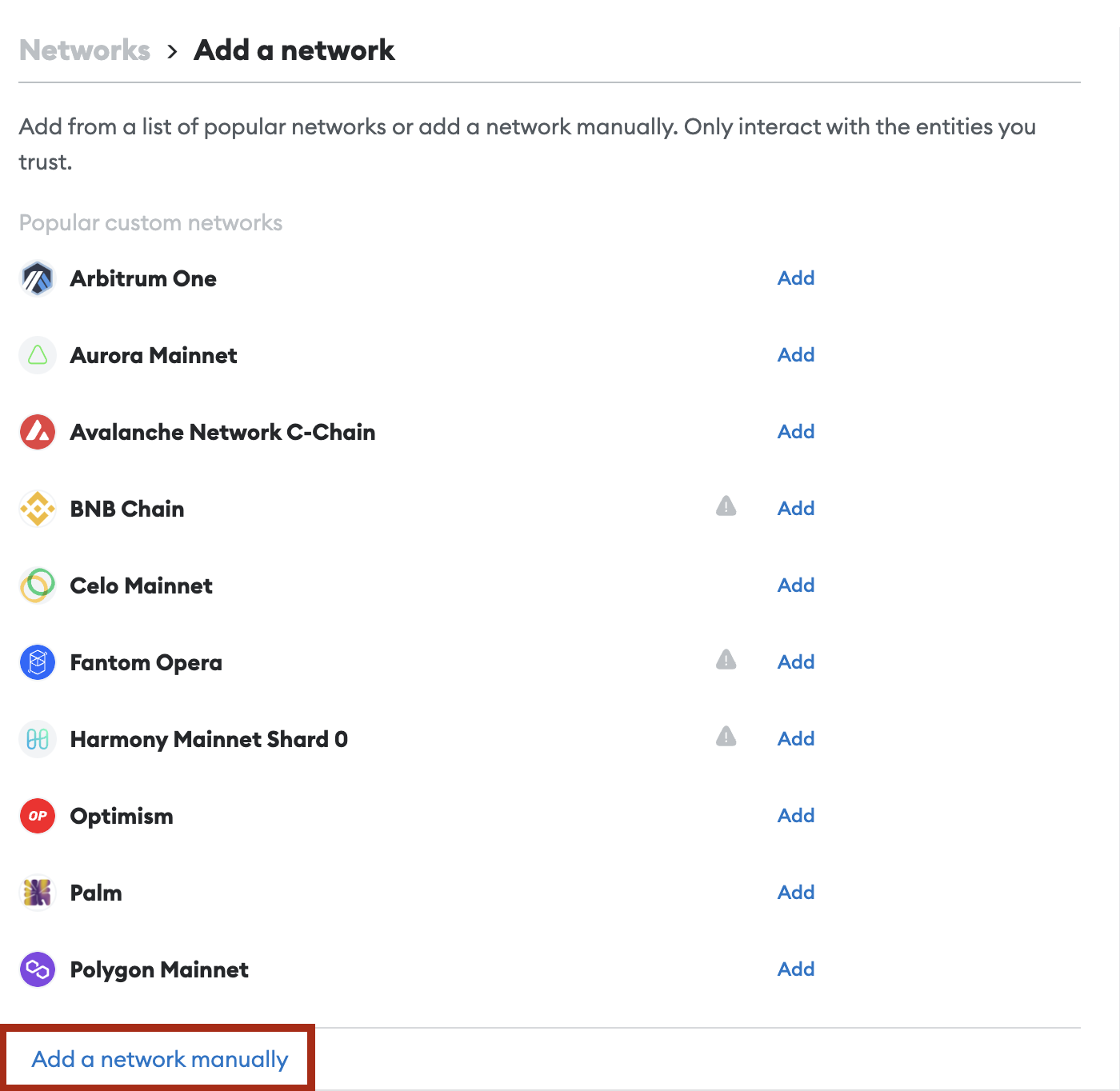
5. In the "Add a network manually" dialog box, enter the following information for the Base Goerli testnet and click Save:

6. You should be able to connect to the Base network in the network selection dropdown section.

What are the benefits of the Base network?
Key benefits of using the Base network include:
1. Low cost
Like other optimistic rollups, Base offers low gas fees designed to significantly reduce transaction costs and improve transaction processing capacity. It achieves this by processing them off-chain and consolidating them into a single test.
2. Accessibility
EVM-compatible chains, like Base, improve accessibility by allowing developers to easily deploy as well as leverage existing Ethereum-based tools, frameworks, and smart contracts across multiple platforms.
3. Scalability
Layer 2 scalability offers significant advantages by improving the transaction processing capacity of blockchain networks. This improvement resolves bottlenecks and reduces inefficiencies, ultimately providing faster and more cost-effective solutions for users and developers.
What are the disadvantages of the Base network?
These are the main limitations and concerns associated with Base:
1. Centralization
One of the main concerns around Base is the degree of centralization. Coinbase serves as Base's sole sequencer node, giving it considerable control over transactions. A sequencer node is a specialized node in a blockchain network responsible for sequencing and finalizing transactions in a given order, which improves transaction processing capacity.
Having a sequencer node concentrates the power of processing and ordering transactions into a single entity. Additionally, this centralized authority has the ability to set and modify fees associated with the Coinbase sequencer. Coinbase has hinted at the possible integration of third-party nodes in the future.
2. Long withdrawal periods
One of the main limitations of the Base blockchain is the long withdrawal periods, which are approximately 7 days. This delay is attributed to the design of Optimism's fraud-proof system, which allows users to dispute transactions and submit evidence of possible fraud within this given time frame.
Long withdrawal periods could result in a suboptimal experience for users.
3. Security
As a Layer 2 built on OP Stack, Base faces a set of security risks. The first concern is related to the effectiveness of fraud proof mechanisms as a security measure. Proof of fraud depends on the vigilance of network participants who must monitor and challenge any invalid off-chain transactions before they are completed on the main blockchain.
However, this mechanism faces several challenges, including issues with reward incentives for participants and vulnerability to data retention attacks.
Conclusions
Base has generated significant interest since its launch. As of September 7, 2023, it has reached a total of over one million users and over $385 million in total value locked (TVL). This incredible achievement places Base at position 8 in terms of TVL, surpassing popular blockchains like Cardano and Solana.
As the first blockchain launched by a publicly traded company, Base is opening up new possibilities to attract a broader audience and gather more users for the adoption of the Web3 world. As the platform continues to grow and evolve, it remains critical that users and developers evaluate and make informed decisions when participating in Base.
Further reading
Blockchain Layer 1 vs. Layer 2 scalability solutions
What is Polygon (MATIC)?
Rollups Optimistas versus Rollups Zero-Knowledge (zkRoll-ups)
Aviso legal y Advertencia de riesgo: Este contenido se presenta "tal cual" únicamente para fines de información general y educativos, sin declaración ni garantía de ningún tipo. No debe interpretarse como un asesoramiento financiero, legal o de otra índole profesional ni pretende recomendar la compra de ningún producto o servicio específicos. Debes buscar consejo particular de asesores profesionales idóneos. Dado que este artículo es producto de la contribución de terceros, ten en cuenta que las opiniones expresadas pertenecen al tercero colaborador y no reflejan necesariamente las de Binance Academy. Para obtener más información, lee nuestro aviso legal completo aquí. Los precios de los activos digitales pueden ser volátiles. El valor de una inversión puede bajar o subir, y podría darse el caso de que no recuperes el monto invertido. Solo tú eres responsable de tus decisiones de inversión. Binance Academy no se responsabiliza de ninguna pérdida en la que puedas incurrir. Este material no se debe interpretar como una asesoría financiera, legal o de otra índole profesional. Si deseas obtener más información, consulta nuestros Términos de uso y la Advertencia de riesgo.